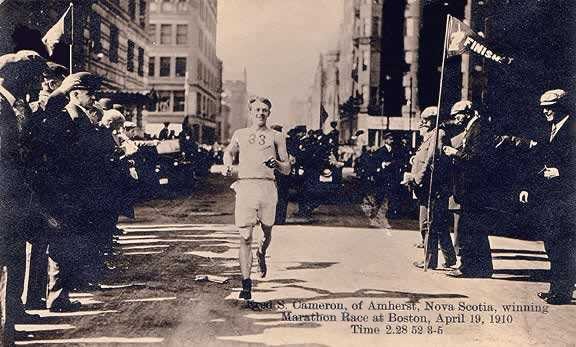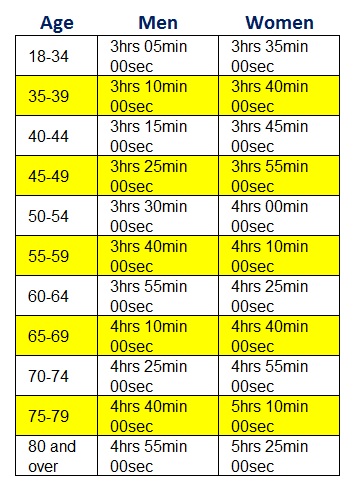What’s so special about qualifying for the Boston Marathon?

Actually, a lot.
For many marathoners, running a Boston Qualifying (BQ) time is a bucket list goal. It’s marathon nirvana – the ultimate achievement. Running a BQ is the light at the end of years of training. That’s why I have a special announcement at the end of this post.
Every runner I’ve talked to who has ambitious goals for 26.2 miles wants to run Boston. The accomplishment of qualifying – and of course, the bragging rights – is an unparalleled achievement.
When I ran my BQ marathon in 2008, it felt incredible. I looked forward to taking the bus ride to Hopkinton and start the gradual descent into Newton, to run the famous Heartbreak Hill, and feed off the pulsing energy of the crowds on the streets of Boston.
My IT band injury prevented me from racing the Boston Marathon and it was a disappointment that weighed heavily on me. But now that I have a BQ time from Philadelphia, I’m looking forward to crossing the finish line on Boylston Street in 2013. Who’s coming with me?
“The World’s Most Prestigious Marathon Course”
Boston is unlike any marathon in the world. It first started in 1897 with a whopping 18 runners. In 2011, nearly 27,000 runners ran the race on “Marathon Monday,” also known as Patriot’s Day in Massachusetts.
In one of the most famous stories, Kathrine Switzer finished Boston as the first woman with a race number in 1967. She registered as “K.V. Switzer” to avoid detection since women were not allowed to run at that time. When officials found out she was running, they tried to physically eject her from the race. Luckily another runner body checked the official to the ground and she was able to keep running.
Her historical finish proved that women could run marathons and sparked a women’s running revolution. Race officials eventually recognized the female race winners from before they were officially allowed to compete in 1972.
After Bill “Boston Billy” Rodgers, a Boston legend, won the race four times in trademark style in the 1980’s, the race has become one of the most competitive marathons in the world. With a prize purse approaching $1 million in 2011, the best marathoners in the world show up to give it their all.
Showcasing the extreme competitiveness of Boston, in 2011 Kenyan Geoffrey Mutai overtook early leader Ryan Hall and crushed the last 10k to finish in a mind-blowingly fast time of 2:03:02.
Yes, you read that right: the world’s fastest time is an average 4:41 mile pace over 26.2 miles.
Don’t let anybody tell you that you can’t run fast at the Boston Marathon.
Marathoners dream of being part of this rich history; running the suburbs of Boston, seeing the Prudential tower in the distance as they snake their way past roaring crowds on the streets of Boston toward the famous finish line on Boylston Street. The Associated Press rightly described the race as “the world’s most prestigious marathon course.”
Now…who wants to BQ?
Qualifying for Boston
Make no mistake: it’s an elite marathon, with strict qualifying times and a new registration process that’s more competitive than ever. Even if you hit a Boston qualifying time, you’re not guaranteed to get in. So it pays to run as fast as possible because the odds are more in your favor.
Let’s dissect the registration process so we can finally understand this:

For the 2013 Boston Marathon, qualifying times must be run before you register for the race, though it may be different. Check the full qualifying details here to make sure.
Times that are at least 20, 10 and 5 minutes faster than the official age group qualifying times will be classified as BQ-20, BQ-10, or BQ-5, respectively.
Because Boston now has a rolling registration process, you’re not gauranteed to get a bib number with a qualifying time.
That’s because registration will open first to all runners in the BQ-20 group (20 minutes or more under the BQ time). If there’s still room in the race, it will open again to runners in the BQ-10 group a few days later. If there’s still room after that, BQ-5 runners will have a chance to register. Finally, if there’s still room, registration will open to all other qualifiers.
Even if you get a chance to submit an application, it doesn’t necessarily mean you’re in. In 2012, registration was still open after the BQ-20, BQ-10, and BQ-5 groups had registered, but only those who beat their qualifying times by 1:14 were accepted, due to space constraints.
The key distinction here is that there are now four waves of registrations for each BQ time: runners who are 20 or more minutes under their BQ, 10 minutes or more under, 5 minutes or more under, and everyone else.
If your qualifying time is 3:40, you now have times you must consider: 3:19:59 (BQ-20), 3:29:59 (BQ-10), 3:34:59 (BQ-5), 3:35:00 – 3:40:00 (everyone else).
How to Run Your BQ
Matt Frazier (a fellow BQ’er) of No Meat Athlete and I teamed up to help you get to Boston. Run Your BQ is a members-only coaching and running community designed to get you into shape to race a BQ marathon.

Run Your BQ is a system, not just random training tactics, to help you accomplish something huge. 2012 is the Year of Stretch Goals and a perfect time for you to start a complete process for going step by step through marathon training.
What makes me excited about this program is that I’ve scoured all the books and the internet (yes, the ENTIRE internet) looking for the best marathon plans. And unfortunately, they are few and far between.
I’m going to knock on myself here, too: even my own PR Race Plan is not the best way to train for a marathon. Sure, it’s highly personalized and includes much more than just running. You get strength workouts, flexiblity routines, running workouts tailored to your fitness and goal race, plus a complete explanation and follow-up questions.
But it’s not enough. To reach your potential in the marathon and accomplish something “impossible” like qualifying for Boston, you need a support group. You need guidance from people who have done it and helped others get their BQ.
I’ve heard from a lot of you recently that this is exactly the problems you’re facing right now. Runners are telling me:
“I simply love running. Just crossing that finish line would mean so much. If I could just avoid injury…I am so fed up right now because I can’t run.”
“I want to make sure I’m doing enough, but not too much…”
“My biggest challenge is figuring out an actual plan to help me accomplish my goals. Invariably I end up committing one of the deadly sins of running, such as too much volume too quickly, hard workouts coming too close together – even though I think they’re properly spaced.”
What if you knew how to train and could reach out for help if you needed it?
What if you had the resources to always know what workout to do, no matter when you’re training?
What if there was a group of talented runners to answer all your questions whenever you had them?
I’m really excited to work with passionate runners who like to take action and accomplish their dreams. That’s what Strength Running is all about – and I know you’re ready to do big things.
Here’s the deal: RYBQ details the many training strategies I used to run 2:39:32 – and stay injury free for three years.
We don’t accept new members often because we spend a lot of time working closely with our current members (in the forum and through regular, live video chats). But sign up to the Run Your BQ private list and we’ll let you know when we’re open.
Qualifying for the Boston Marathon is a monumental achievement. If you’ve said to yourself recently, “It’s time to reach my personal goals that I haven’t accomplished yet” – now’s your chance.
You can wait and “figure it out” or you can take action today. We’d love to have you on board.
Sign up here to get on the Run Your BQ private list. You’ll be one step closer to running your next marathon PR.